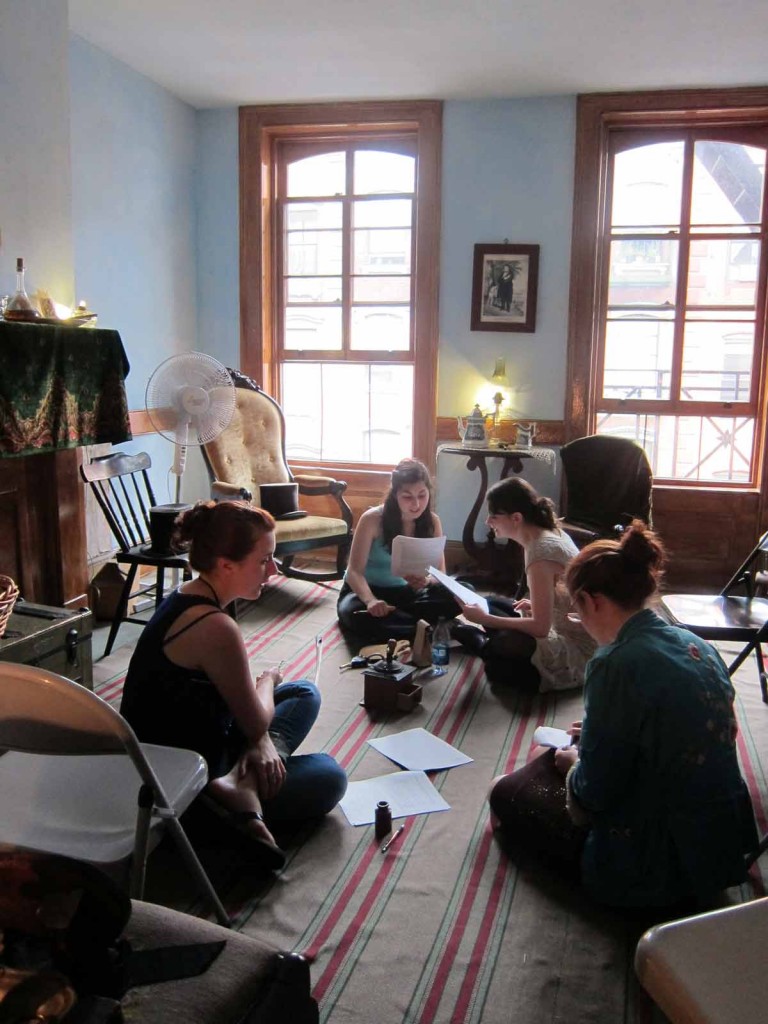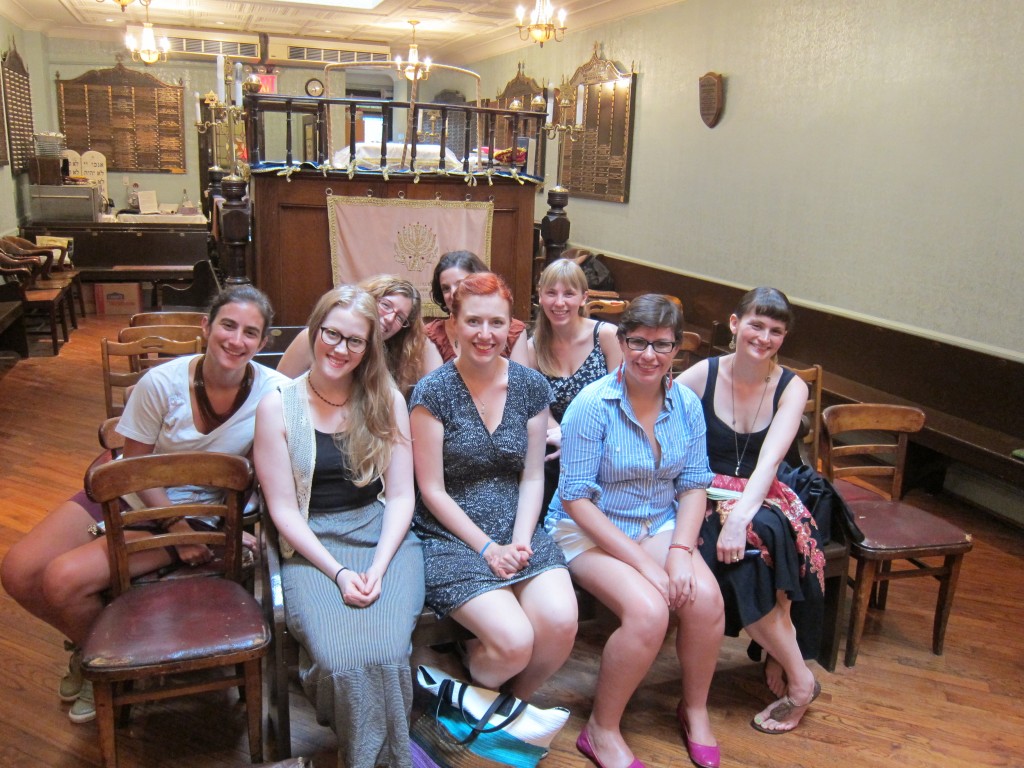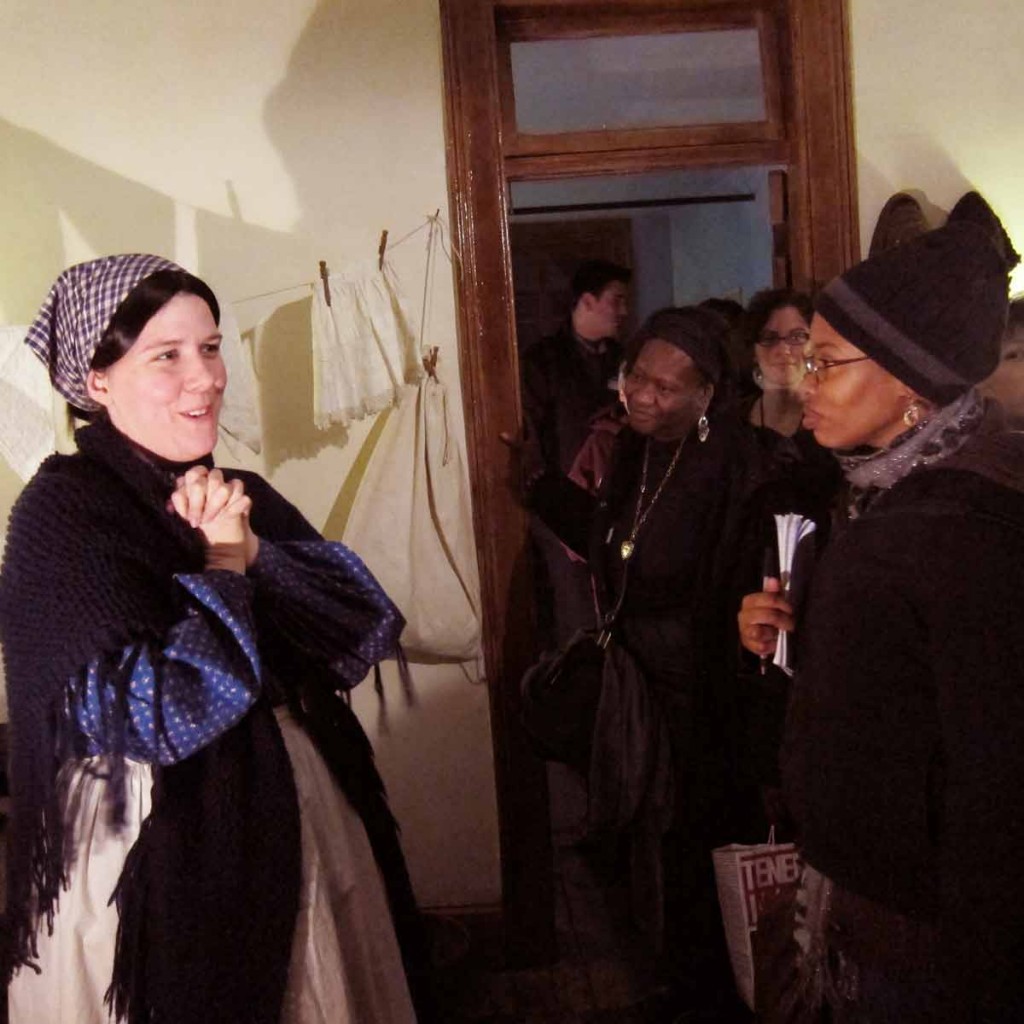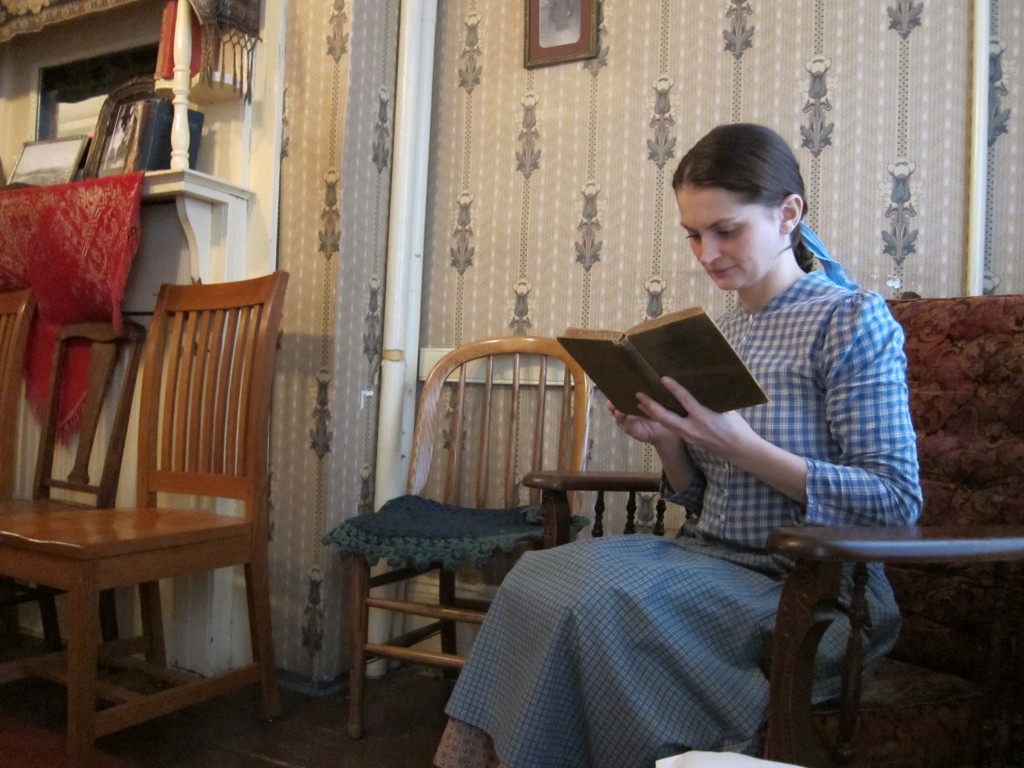Blog Archive
The Multiple Personalities of Tenement Museum Costumed Interpreters
Our Live! at the Tenement program allows visitors to meet former residents of 97 Orchard Street; On Monday the 20th, we will host Bridget Moore, Harris Levine, and Rosaria Baldizzi, a roster than spans nearly 75 years. How can we do all this time travel? With costumed interpreters, of course!
Imagine waking up in 2014; using an alarm clock, cooking eggs on a gas or electric stove, taking the subway or a car to work, listening to music on a CD or other digital device, making calls on your cell phone, and of course, using indoor plumbing. Now imagine that when you get to work, you have to travel back in time to when none of these things existed. Not only do you have to make this leap of time and faith, but you have to answer questions from people who haven’t left modern times! This is the life of a Tenement Museum costumed interpreter.
While lots of people know of costumed interpretation, few people know about the interpreters themselves. Thankfully, Jess Varma, the Education Assistant for Costumed Interpretation at the Museum and accomplished interpreter, is here to answer some questions for us. But this time, she’ll be answering as a contemporary lady!
How many characters do interpreters play? Do you ever get confused?
I interpret seven different residents of 97 Orchard: Victoria Confino (1916), Dora Goldstein and Beckie Goldfein for Tenement Inspectors (1906), Bridget Moore (1868), and Rosaria Baldizzi (1935). I’ve also interpreted Fanny Rogarshevsky a couple of times.
Once I was Victoria, Dora, Bridget and Rosaria, all in one day! It felt a bit like having multiple personalities. There were a lot of jokes made about the space/time continuum and the responsibilities of time travel on that particular day.
What will sometimes happen is that little verbal tics from a different character will creep in. For example, my Victoria often says “Si?” at the end of a sentence. Because she’s the person I interpret the most, I constantly have to remind myself NOT to do that for, say, Bridget Moore from Ireland in 1868.
How long did it take to get the accent down? What did you use to model the accent?
It usually takes me a few weeks to feel comfortable with a new accent, so I start practicing well before I actually will ever be heard by the public. We have a number of different resources at our disposal: we use recordings of native speakers, actor’s accent guides, and we do training meetings as well; personally, I really like learning kinesthetically, playing with how the accent feels in the mouth.
With Victoria, we are lucky enough to have some recordings of her voice, although they are from when she was much older. When I was first learning to interpret her, I practiced her voice so much at home that my husband permanently banned her from our relationship.
The wigs are a very important part of Tenement interpreters. How do you care for your wig?
Wigs are ornery, annoying creatures. They need to be washed periodically with special shampoo, conditioned, brushed with special combs, and styled. Basically, you care for it like an exotic pet.
How long does it take to get into period clothes? Are they comfortable?
The general rule of thumb is that the further back you go, the more clothing there is to put on. Victoria’s 1916 clothing is totally comfortable, while Bridget’s 1868 clothing is … heavy. The comfort level actually depends a lot on the temperature; summer can be bad.
But then you remind yourself that these women wore all that clothing on a regular basis (with corsets) while hauling water up the stairs, cooking over a coal burning stove, wiping kid’s noses with their aprons, chatting with their neighbors, shopping at the markets, dealing with heartbreak and joy and everyday life…I actually love getting into costume, because it puts me so immediately into the time period.
Do you do anything particular with your body to get into the role? What about your face?
The clothing informs the body language a lot. I also play around with how the person’s age and the work they do would affect how they move. For instance, we know Victoria loved to dance, so I imagine she was light on her feet. Dora Goldfein, on the other hand, had nine children, so I imagine she was tired a lot; I like to play her heavier, more weighed down.
The main thing with the face is no makeup! So I actually put my face on after my shift.

Some of "The Bridgets," the actresses who play Bridget Moore, craft their character in the Moore apartment.
How much freedom do you have with the character? For example, Vicki is always so whip-smart and sarcastic, and I love that about her. Is that your character or is that was Victoria Confino was actually like?
Victoria was described by the people who knew her as bright, witty, and sharp-tongued if you made her angry. So yes, she was like that! Those little nuggets of information are like gold to the costumed interpreter…you take it and run with it. With other residents, we know nothing about their personalities, and so we had to turn to other sources to put together our interpretation. For Bridget we turned to letters that Irish immigrants wrote during the time period, to get clues about how she might have spoken and felt about her circumstances. After I’ve learned all I can, I just put myself into her shoes.

"The Vickies," who play Victoria Confino, at Kehila Kedosha Janina, a Romaniote rite synagogue on the Lower East Side, where the group learned what life would have been like for a Sephardic Jewish family in a heavily Ashkenazi neighborhood.
Have you ever broken character? Almost? What made you?
Costumed Interpreters at the Tenement Museum never, ever break character. Ever. But sometimes I’ve come close when little kids say funny things. Or when my husband (who works here as an educator) laughs at me. Which he does, often.
What’s the craziest thing that’s ever happened to you as an interpreter?
I once managed to lock myself out of the building (in Victoria’s costume). It was snowing like crazy and I had to essentially break into my own apartment by jimmying the window open and climbing in.

Costumed interpreters learn all sorts of skills; Jess Varma can keep a coal stove going and jimmy open windows!
Thanks Jess!!
Come see our wonderful interpreters on Monday January 20th (Martin Luther King Jr. Day), at 10 am for Live! at the Tenement. Tickets available here.
– Posted by Lib Tietjen




